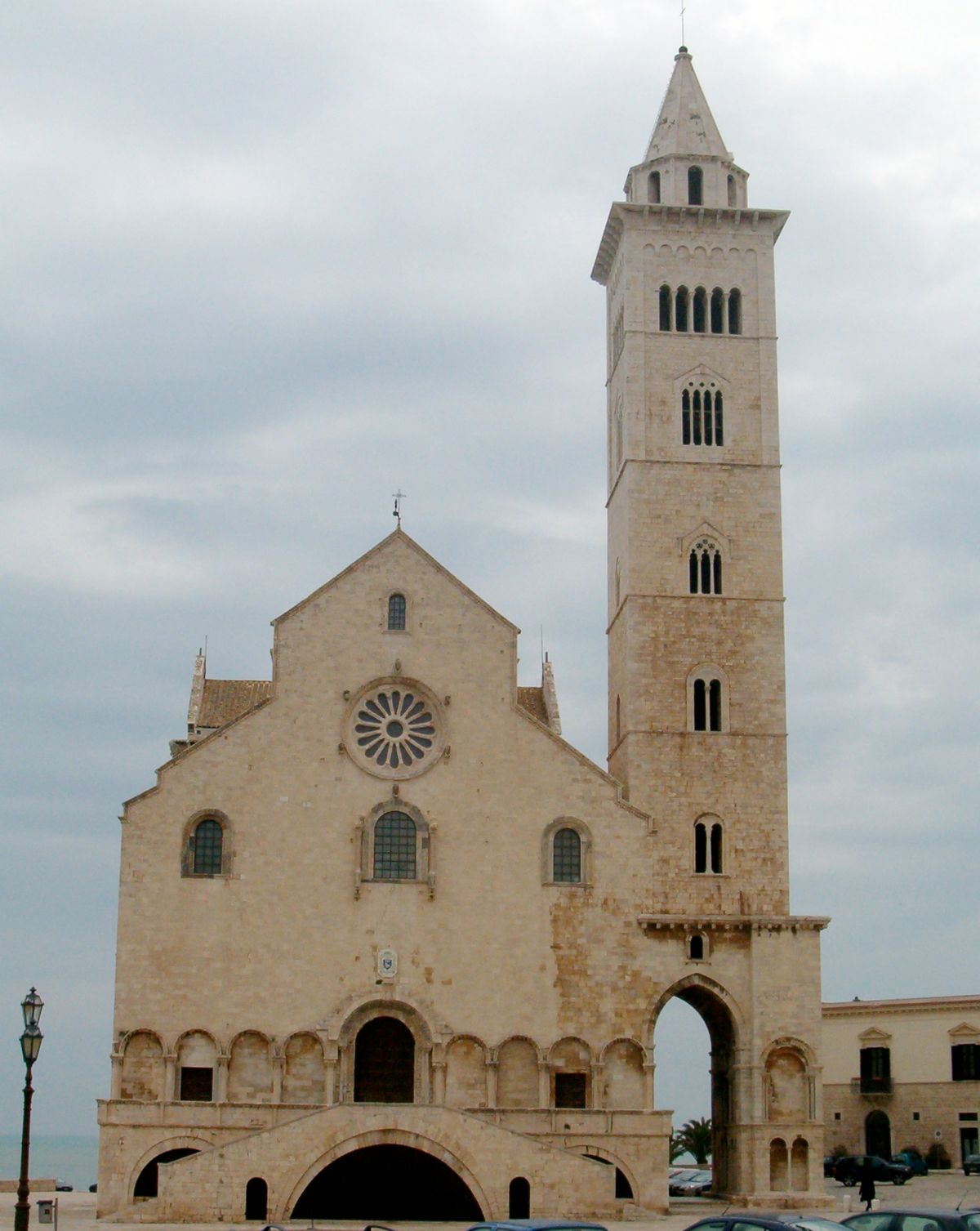About
The 12th-century Trani Cathedral in Puglia, Italy, is a prime example of Apulian Romanesque architecture. The iconic structure is made of calcareous tuff, a typical stone obtained from the city's caves that's known for its very light, almost white, color. But there are many architectural oddities that make this seaside church unique.
First of all, the entrance to the main church is unusually in an elevated position, raised about 16 feet above street level. Even stranger is that the Crypt of Saint Nicholas, which is under the main church, can be also accessed from the outside thanks to an opening below the main entrance. This is an unusual feature for a crypt, which is supposed to be hidden and difficult to access.
From here, the Crypt of Santa Maria della Scala can be reached, which dates back to the 7th century or even earlier. Then from a small staircase on the left aisle of the main church, you can descend further into the Hypogeum of Saint Leucius, a very ancient, dark, and cold quadrangular environment situated below sea level, which once housed the relics of the 7th-century saint.
The bell tower, built between the 13th and 14th centuries, rises 194 feet tall. A long spiral staircase leads to the uppermost part, where you're rewarded with a beautiful 360-degree view of Trani and the Adriatic Sea. Another oddity for a Romanesque church is the large pointed arch under the bell tower. The rather strange shape of this space creates an unusual architectural effect, significantly dematerializing the base that supports the mass of the tower. Because of this feature, the structure of the bell tower was deemed unsafe until it was restored in the 20th century.
Related Tags
Know Before You Go
The cathedral (officially called the Cathedral of San Nicola Pellegrino) and bell tower are open daily and free to enter.
Flavors of Italy: Roman Carbonara, Florentine Steak & Venetian Cocktails
Savor local cuisine across Rome, Florence & Venice.
Book NowCommunity Contributors
Added By
Published
October 1, 2018





































